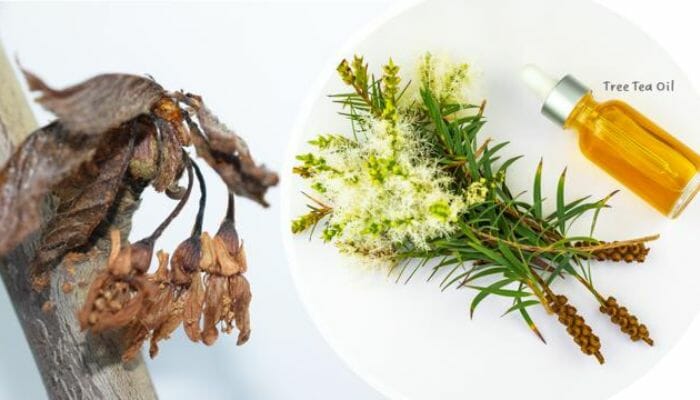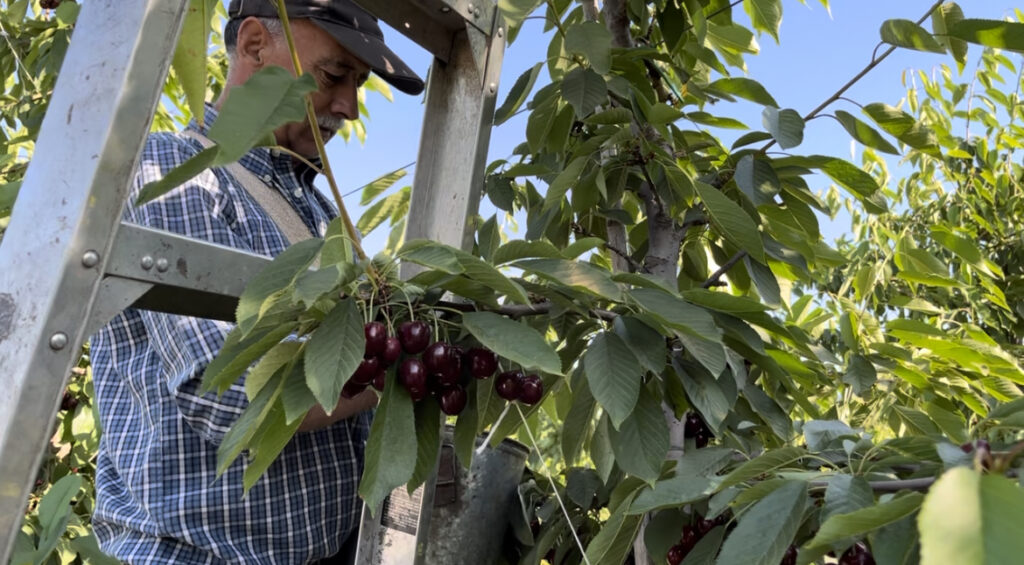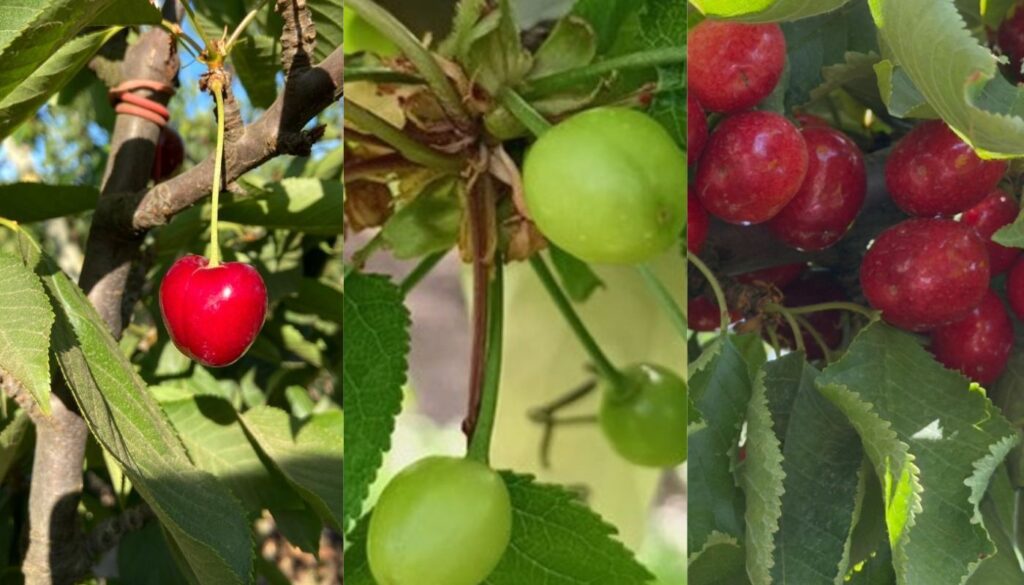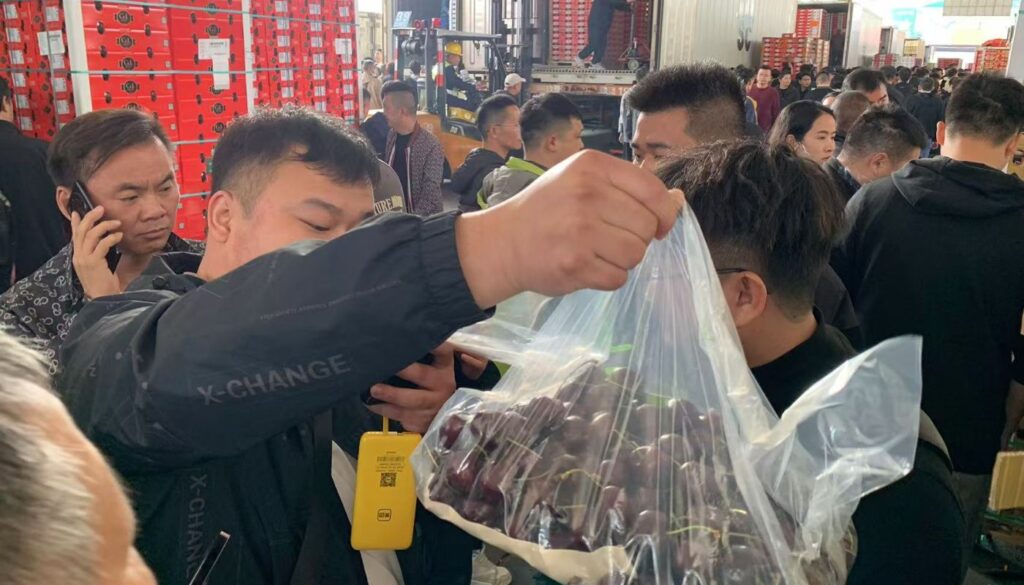Part of traditional ancestral medicine, which is now considered complementary or alternative medicine, is based on the knowledge of the properties that certain plants have to generate improvements in patients with the most diverse conditions. Probably, the most emblematic known case is Aspirin®, which although it is a compound synthesized in a laboratory, its origin dates back to ancestral knowledge of at least a couple of millennia, where ancient cultures knew the analgesic capacity of the white willow (Salix alba, from this genus comes the name of salicylic acid and by rebound of acetyl-salicylic acid); German scientists knew these properties and worked on the chemical synthesis of a product without side effects, since taking willow extract directly is very acidic, which brought stomach problems, thus this well-known remedy was born, so popular that it was even part of the crew of the Apollo 11 ship. Can this principle, with evidence in humans, be applied to combat abiotic or biotic stress in our plants? Definitely, the answer is YES, today we have abundant evidence that confirms the use of botanical extracts to improve other plants. The objective of this article is to go through the systems involved in the control of diseases generated by botanical extracts through the knowledge established through various studies carried out on the effects of willow oil Melaleuca alternifolia better known as tea tree oil (TTO, Tea Tree Oil).
Climate change is changing the dynamics of certain pathogens, and this can be seen in various ways, for example, pathogens that do not adapt well to dry environments, as is the case of Botrytis cinerea In table grapes, they have been displaced by others such as Penicillium that tolerate more water stress environments and high temperatures. This reality should make us reformulate our control strategies, including the plans for the use of phytosanitary products, where although the botryticides They cannot be left aside, taking the example of grapes, other assets close to harvest must be included that give a blow to Penicillium and other fungi that do adapt to a more demanding environment. This is the scenario where botanical extracts are becoming absolutely relevant today, because they generally offer broad protection against various pathogens and at the same time, some can intervene in defense and biostimulation processes on the applied plant, mixing effects on biotic and abiotic stress, which end up generating a product better adapted to the export process and plants that resist the attack of pathogens with a better response.
One of the most studied products with a vast marketing history in the world is tea tree oil, a species of Australian origin, which was used by the natives of that region for its antimicrobial and anti-inflammatory properties, generally used as an ointment for skin infections.
Control of phytopathogenic fungi
The first thing we must understand, not only for TTO, but for most plant extracts, is that they are not composed of a single compound, as would be a chemically synthesized fungicide, but rather several compounds, in this case: monoterpenes, sesquiterpenes and hydrogenated alcohols, which somehow interact to generate control or stimulation results together. Table 1 shows the different compounds that make up TTO.
Table 1. TTO Components (Modified from Carson et al., 2006)
| Compound | Type of compound |
| Terpinen-4-ol | Monocyclic terpene alcohol |
| γ-Terpinene | Monocyclic Terpene |
| α-Terpinene | Monocyclic Terpene |
| 1,8-Cineole | Monocyclic terpene alcohol |
| α-Terpinolene | Monocyclic Terpene |
| ρ-Cymene | Monocyclic Terpene |
| (+)-α-Pinene | Dicyclic Terpene |
| α-Terpineol | Monocyclic terpene alcohol |
| Aromadendrene | Sesquiterpene |
| δ-Cadinene | Sesquiterpene |
| (+)-Limonene | Monocyclic Terpene |
| Sabinene | Dicyclic Terpene |
| Globulol | Sesquiterpene alcohol |
Today, the available information indicates that the spectrum of action of TTO control ranges from yeasts to filamentous fungi. The first analyses to determine the mode of action of TTO were carried out in Candida albicans as a model fungus, and the results indicated that it would alter the permeability of the cells of this human pathogen. At the same time, it was discovered that in C. albicans, and a little later in Fusarium solani, TTO would also inhibit respiration in a dose-dependent response. Mycelium of Botrytis cinerea treated with TTO at different concentrations was analyzed in terms of its response at the mitochondria level, determining severe damage at 2 ml/L which resulted in a loss of matrix and an increase in the irregularity of these important organelles. The permeability of the mitochondrial membrane was increased by TTO, which could be verified through a sustained decrease in the amount of intracellular ATP. Thus, these results in B. cinerea They suggest that mitochondrial damage caused by TTO results from the disruption of the tricarboxylic acid cycle and the accumulation of reactive oxygen species (ROS), a process that would be involved in the mechanism of generation of antifungal response.
While TTO has a fairly obvious mode of action against a super pathogen as B. cinerea, its control requires mixed strategies, based on applications of synthetic fungicides and this type of alternatives. In an experiment in Italy, on table grapes, the control of gray rot caused by B. cinerea Alternating use of fluopyram with TTO improved the efficacy of both treatments when applied separately. Similar experiments have been carried out with other crops such as blueberries alternating with other botryticides such as fludioxonil & cyprodinil, and the results are favorable, concluding that this type of strategy is an important solution to reduce the use of conventional fungicides for diseases such as blossom blight in blueberries.
Control of phytopathogenic bacteria
Before describing the latest advances in how TTO is able to control bacteria, we will talk about some adaptive mechanisms that these microorganisms possess, which allow them to successfully colonize the world and incidentally attack our plants.
In Chile, various variants of Pseudomonas They cause us problems in stone fruit plants and last spring was one of the years with the most attacks of this type of bacteria in cherry orchards, due to high humidity during the flowering period and mild temperatures. The fact that one year attacks occur and others do not, means that in some way the different bacteria Pseudomonidae They cohabit in plants without causing disease, unless certain events occur, which, supported by the climate, allow the development of the disease; but then:
What is the mechanism for a phytopathogenic bacteria (eg. Pseudomonas) that lives “peacefully” in a plant as an endophyte, becomes an aggressor?
The answer is not so simple, and has been a point of scientific debate in recent years. Studies in model species such as Pseudomonas aureoginosa and phytopathogenic such as Pseudomonas syringae pv. actinidiae (Psa) have revealed to us quite hidden mechanisms that allow us to get an idea of what is happening.
A mechanism has been described that bacteria use, which in some way is as if they “smell” each other; the more bacteria scent there is in the environment, the more they change their attitude and can become emboldened, beginning pathogenic processes, biofilm formation, among others. In this way, bacteria receive information about how many populations exist at a given time and begin a change in their behavior, technically this is called quorum sensing, In Spanish, it would be quorum perception or sensitive quorum, which is defined as a gene regulation mechanism in response to cell density. Each bacteria (it has also been recently described in fungi) releases chemical substances that correspond to the signal, in other words, that molecule would be the “bacterial aroma”; the more “aroma” or signal accumulates in the medium, because there are more bacteria, it reaches the level that activates genes in bacterial cells and due to this situation, they begin a process of pathogenicity.
Various studies indicate that TTO could confuse this mechanism, nullifying the chemical signal and therefore the quorum sensing, preventing bacteria from communicating and changing their behavior, which results in a slowdown in population growth. In this way, preventive applications of TTO in critical periods of population growth Pseudomonas, can be coupled to conventional handling with the aim of a more efficient control response.
Figure 1. Field study comparing the effect of different treatments 7 days after application on epiphytic populations of Pseudomonidae in cherry blossoms in relation to an absolute control. Syngenta – Diagnofruit study
Figure 2. Field study comparing the effect of different treatments 14 days after application on epiphytic populations of Pseudomonidae in cherry blossoms in relation to an absolute control. Syngenta Study – -Diagnofruit
The described mode of action is added to the membrane instability that we have detailed in fungi and that is also observable in bacteria; both mechanisms work at a different level to common antibiotics, very effective biocides but that easily generate selection pressure in bacterial populations, ending in resistant individuals. In this way, incorporating botanical extracts is a priority in anti-resistance strategies in the field, since they manage to lower populations regardless of the degree of antibiotic resistance that the individual or population has.
Turning on plant defenses
Chitosan, salicylic acid, s-methyl acibenzolar, are some of the elicitors that we commonly use on our plants with the aim of generating a series of chain reactions that end up generating a generalized response in the plant that promotes the synthesis of proteins responsible for defense against situations of attack by phytopathogens and other types of stress.
But could plant extracts activate the defenses of the plants to which they are applied? The answer is that at least some could be considered real elicitors. Several studies have been carried out in various parts of the world to verify whether this effect is generated by TTO, and in Chile we have even been able to make some progress in this knowledge about cherry plants.
In a very summarized way, the reactions that we expect in a plant after the application of a defense elicitor can be described as:
- Overexpression of PR genes. Genes that will end up generating proteins intended for cell protection.
- Rapid accumulation of reactive oxygen species (ROS), These molecules start a series of signaling cascades that end in the activation of other defense responses in the plant; it is like the kick-off.
- Thickening of the cell wall
- Production of phytoalexins and salicylic acid
Today, to check whether a compound generates this type of response, we use molecular tools, specifically a special type of PCR that allows us to know if some genes that regulate the points mentioned above are under or over-expressed after the application of the treatment with the extract and it is compared with control plants and also infected plants, to know the complete interaction of the disease.
Applications of TTO of 1 L/ha in wheat seedlings with and without inoculations of Fusarium graminearum They were able to increase the expression of PR, ROS, PAL (phytoalexins) and other well-known genes associated with plant cell defense and rescue, the so-called WRKY, 2 or 3 days after treatment. In this study, it was possible to establish that the induction of defenses occurred in the absence of infection by the pathogen, which is why it is possible to validate it as an elicitor in wheat. Similar results have been obtained in studies carried out on tomato and banana, where Fusarium is an important pathogen and the responses to TTO treatments have been effective for control through elicitation.
These types of responses are general, meaning that unlike what happens in humans, for example, where our systems specifically identify a pathogen, generating an immune response that can be sustained over time, plants carry out a series of molecular strategies in tandem for different pathogens; thus, we could see the same defenses elevated against an attack by Xanthomonas either Fusarium in tomato.
A study in tomato was able to show changes in the expression of PR, WRKY, ACC (ethylene) and other genes, 3 days after treatment without and with the interaction of the pathogen. At 10 days after the treatment, those plants treated and inoculated with the pathogen still exhibited an increased expression of a large part of the protection genes, allowing us to conclude a strong induction and effect priming which helps a lot in preventing infection.
Figure 3. Heat graph for gene expression under different treatments in tomato leaves, 3 and 10 days after application with TTO and/or inoculated with Xanthomonas campestris. With: Water control; TTO: Tea Tree Oil (Timorex Gold ®); Pathogen: Inoculation with X. campestris; TTO + Pathogen: Inoculation with X. campestris + Tea Tree Oil (Timorex Gold ®). Colors towards red indicate greater expression of the gene.
Recommendations for the use of TTO in cherry trees
The current season is expected to be wet, with possible rainfall in spring and summer, as well as mild to high temperatures, so we consider it a high risk for species such as cherries, increasing the possibility of attacks by pathogens that cause blossom blight and fruit rot, so we must redouble our efforts to reduce the risk. Considering the multiple biocidal action on fungi and bacteria, and also the elicitor effect, the flowering process is a critical stage where TTO is a perfect tool for the control of blight caused by Botrytis, Monilinia I Pseudomonas, complementing synthetic fungicide applications. The second critical stage begins at straw color and ends at harvest, at least a couple of applications interspersed with the conventional program are recommended to stimulate the early defense system and lower the inoculum load as the fruit's maturity and susceptibility to rot increases.
Projections of use of botanical extracts
In the past, we used botanical extracts, assuming that these only generated a type of direct control over phytopathogens. Citrus extracts were probably the ones in charge of starting these approaches, reinforcing application programs for table grapes to control gray rot. Today we know that in addition to controlling pathogens, including microorganisms from different kingdoms such as bacteria and fungi, there are some extracts such as TTO that are also elicitors, generating defense responses in the plant, which will add to direct control, and in this way reinforce the possibilities of effective and efficient control.
In the future, consumers will be increasingly strict with the use of phytosanitary products on fruits and vegetables, hand in hand with the reduction of permitted pesticides. In addition, climate change will promote the emergence of new pathogens; in this way, low-impact, greener tools that have effects beyond the control of the pathogen, and that also help the plant in the stimulation of defense processes, will be fundamental in sustainable agriculture in the medium and long term.
Reviewed literature
Abbey, J- et al. 2019- Biofungicides as alternative to synthetic fungicide control of gray mold (Botrytis cinerea) – prospects and challenges, Biocontrol Science and Technology, 29:3, 207-228
Abbey, J. et al. 2021. Potential use of biofungicides and conventional fungicide for the management of Botrytis blossom blight in lowbush blueberries, Canadian Journal of Plant Pathology, 43:5, 704-713
Carson C. et al., 2006. Melaleuca alternifolia (Tea Tree) oil: a review of antimicrobial and other medicinal properties. Clin Microbiol Rev 19(1):50-62.
Iseppi, R. et al., 2023-. Effects of Melaleuca alternifolia Chell (Tea Tree) and Eucalyptus globulus Labill. Essential Oils on Antibiotic-Resistant Bacterial Biofilms. Molecules, 28, 1671
Noumi E- et al. 2018. Chromobacterium violaceum and Pseudomonas aeruginosa PAO1: Models for Evaluating Anti-Quorum Sensing Activity of Melaleuca alternifolia Essential Oil and Its Main Component Terpinen-4-ol. Molecules. 23(10):2672.
Terzi V. et al. 2007- In vitro antifungal activity of the tea tree (Melaleuca alternifolia) essential oil and its major components against plant pathogens. Lett Appl Microbiol. 44(6):613-8Rotolo C, et al. 2018. Use of biocontrol agents and botanicals in integrated management of Botrytis cinerea in table grape vineyards. Pest Manag Sci 74(3):715-725








